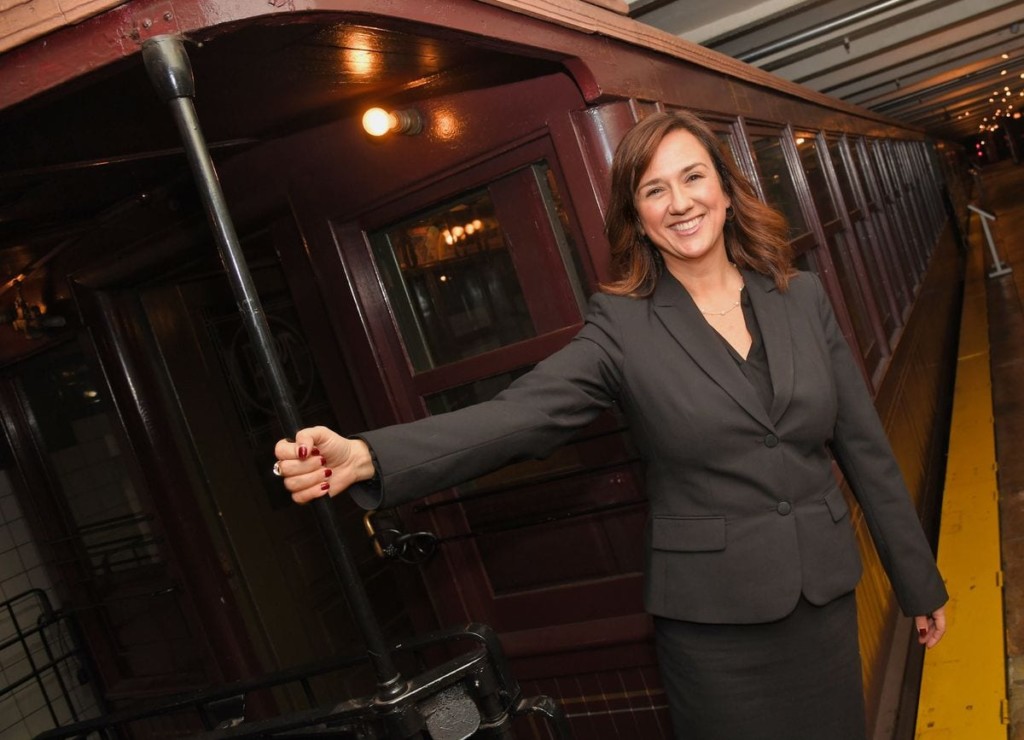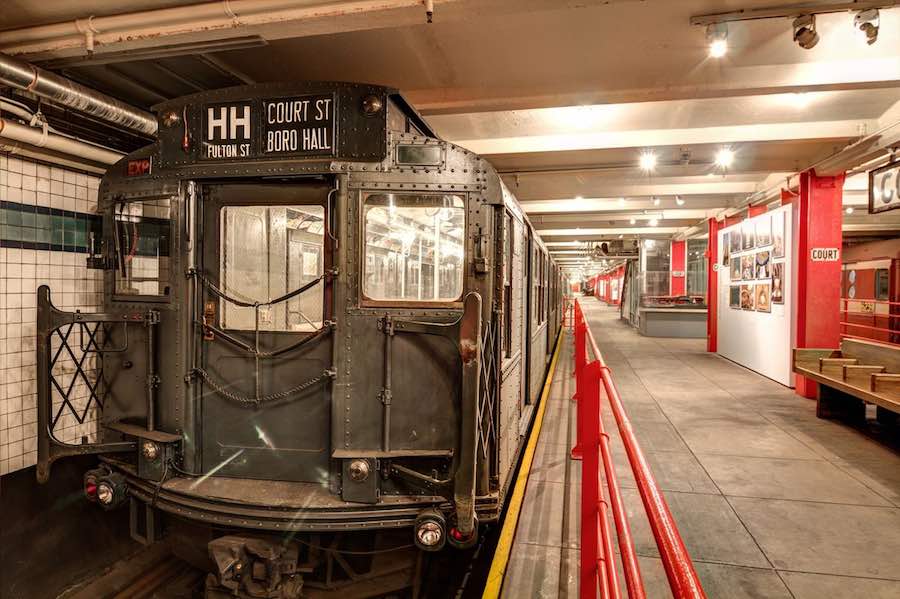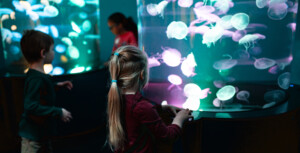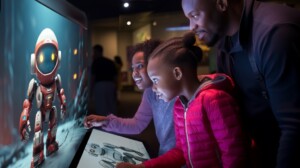Through a programme of exhibitions, tours and workshops, the New York Transit Museum celebrates the evolution of the New York metropolitan region, sharing its history with regional and international audiences.
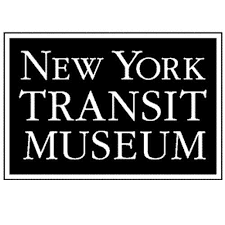 Concetta Bencivenga, who has been the museum’s director since January 2017, spoke with Blooloop.
Concetta Bencivenga, who has been the museum’s director since January 2017, spoke with Blooloop.
A history major and political science minor at a liberal arts college, she was always a lover of history. “The notion of sense of place, where you come from and where you are going, is a huge driver in my life.”
Graduating from college, she served in the Peace Corps in Thailand for two and half years. There, she taught English as a foreign language and worked on HIV prevention and education for middle school girls. Returning to the USA she worked for the Peace Corps administration, before receiving a master’s in public policy from the Lyndon B. Johnson School at the University of Texas.
She says: “I had received two full scholarship opportunities, one in New York and one in Texas. As somebody who was born and raised in New York, I thought it would be interesting to see what the rest of the country thinks about things.”
An inclination towards public finance and a ‘joiner’
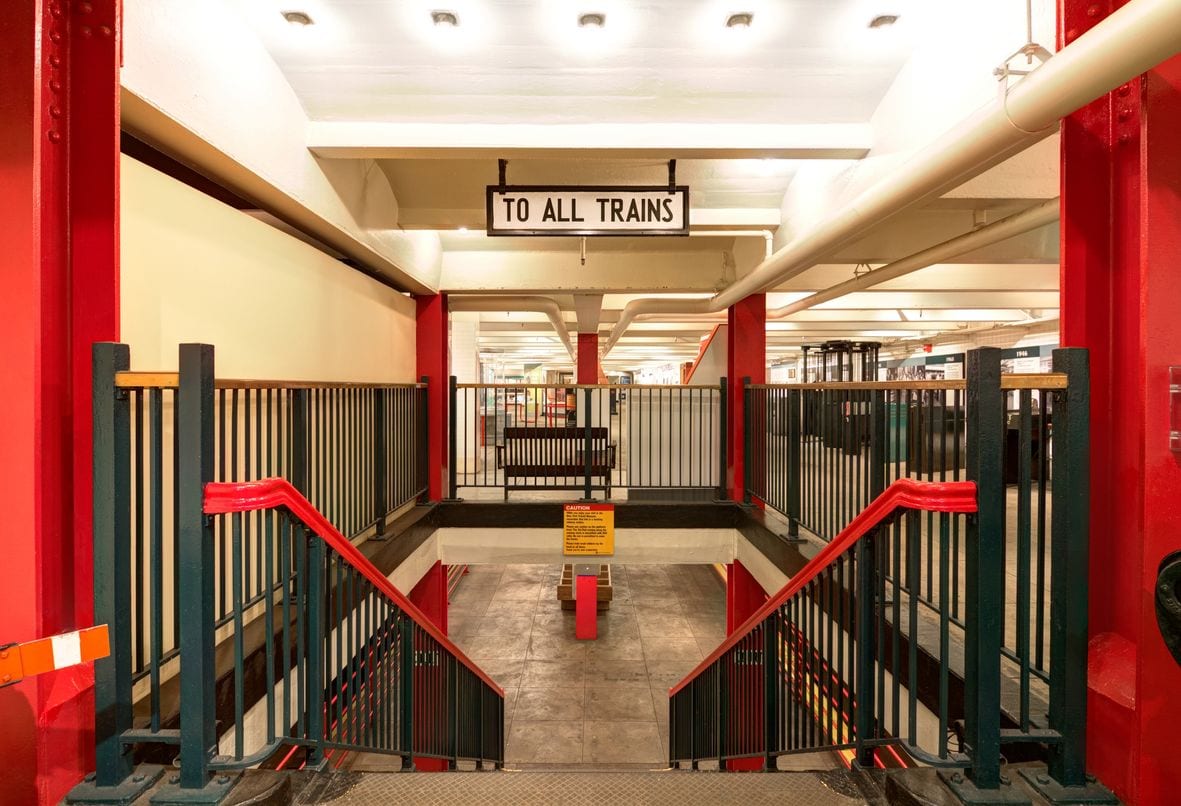
Her master’s degree was in public policy, and to her surprise, she discovered she had an aptitude for public finance. “I had realised in graduate school that the independent sector is disproportionately female, and yet women, disproportionately, don’t do finance. I went to business and law school, and wrote my professional report on a government that was in crisis. Then, I became a consultant for 18 months with a large consulting firm that works with municipalities. While I love the work, I realised that I am a ‘joiner’; I like to be part of an organisation, not an option when you’re a consultant. And so I had the opportunity in 2003 to join the Children’s Museum of Philadelphia, as their chief financial officer.”
The museum was about to undergo a complete relocation, renovation and relaunch. Bencivenga was fascinated by the process both from a policy and a logistical perspective. “How do you scale the organisation up without losing its essence?”
She worked at the Children’s Museum from 2003 until 2012, first as financial officer, and then as chief operating officer.
On board the Museum Express
“It was my first exposure to museums, and I was incredibly fortunate to learn from two of the best in the industry. Nancy Kolbe, who is legendary, a tour de force in the children’s museum space, and Laura Foster [Executive Director at Please Touch Museum], both of whom had been on the board of AAM, and were just incredible museum role models.
I was delighted to be part of the museum field, because museums are filled with the grooviest people you will ever meet; people who are really smart, and not jerks about it; inquisitive, thoughtful people trying to figure out, how do you position this really important work and contents and experience for the greater good.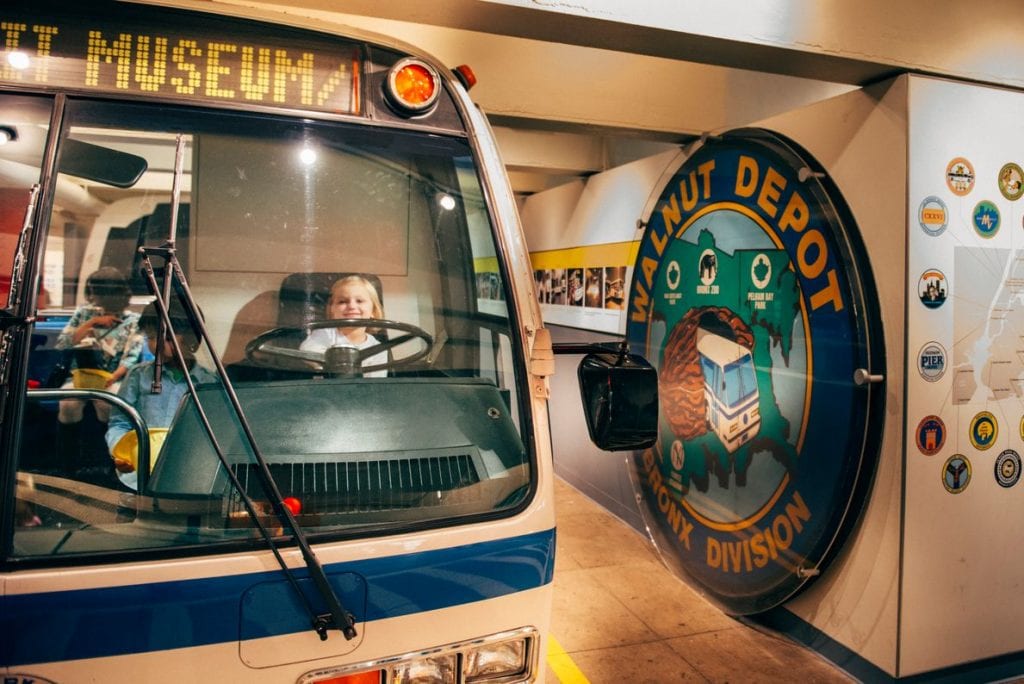 Bencivenga left the Please Touch museum in 2012.
Bencivenga left the Please Touch museum in 2012.
“I remain so proud of the work that we did when I was there. I am also proud, protective and supportive of all of the incredible people that I worked with over those years.”
Moving back to New York to be closer to her family, Bencivenga knew she would have to find a way back to the museum sector.
The beginnings of innovation
In the meantime, she had two jobs which would pave the way towards the innovations she is introducing at the NY Transit Museum. Firstly, as Executive Director of generationOn, the youth division of Points of Light. It is an international non-profit, nonpartisan organization headquartered in the United States. The organization is dedicated to engaging more people and resources in solving serious social problems through voluntary service. She was responsible for all activities related to youth service and community engagement. This included a national Youth Advisory Council, national days of service (9/11 and MLK), and global activation around issue areas such as food insecurity and childhood hunger.
Secondly, she worked as Assistant Head of School for Operations & Advancement at the IDEAL School of Manhattan. This is an institution with an approach to inclusion education and social justice that has garnered national and international attention.
She says: “I worked for a non-profit that was trying to bridge the gap between young people and volunteering; a connection to community. Then I helped out for a couple of years in a non-profit independent school that was trying to build a new educational model.
Both of them were not meant to be forever homes for me. However, I learned so much, and also it is so incredibly relevant to the work that I do now. They have prepared me in ways that nobody could have foreseen for this position.”
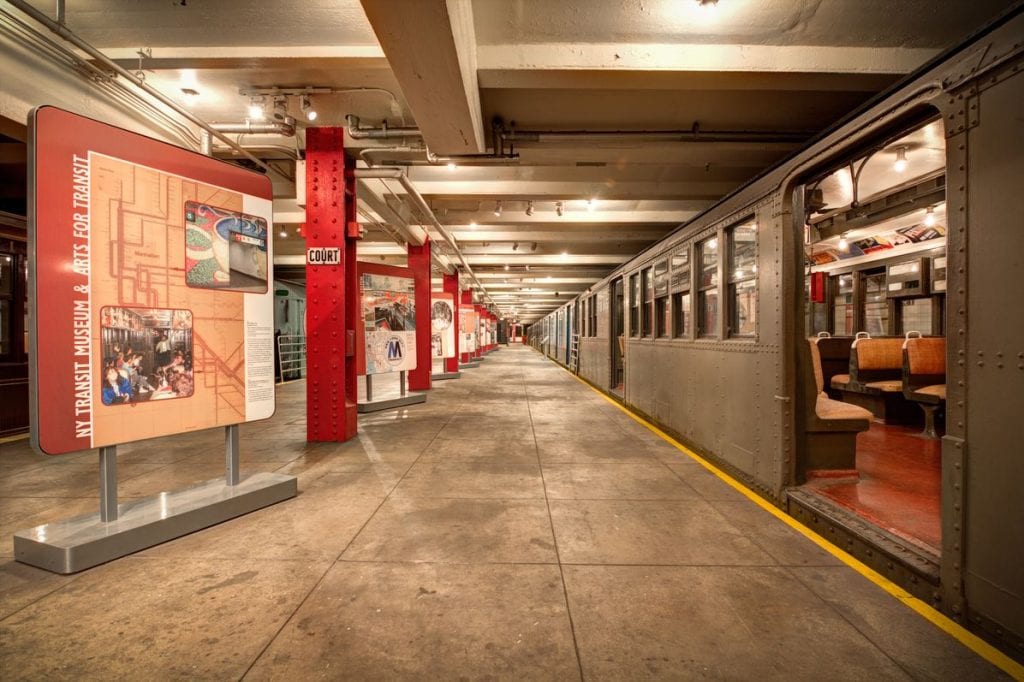
Back on track at the New York Transit Museum
The position of Director of the NY Transit Museum was listed on the AAM website.
With a background in public policy, finance and the museum sector, Bencivenga was more than equipped for the post. “So I threw my hat in the ring for consideration, applied, and got the job. I feel very grateful to be back in the field. And I’m even more grateful, which I probably didn’t think possible, to be at this specific museum. Because it is fantastic.”
We live, Bencivenga maintains, in a hyper-segmented world. “You can choose your news, apparently you can choose your facts, and choose your arts and culture. If you dig tapestry, you go to the Cloisters. Or if it’s modern Art that you like, you go to MoMA. Alternatively, if you prefer avant-garde modern Art, you go to MoMA PS1 in Queens. I believe that really universal experiences are super important, and few and far between.”
New York for everybody
“The NY Transit Museum tells a universal story. It is for everybody, and it tells the story of this region; this sense of place, through the lens of transportation. New York is New York as we know it, the city, the state, the larger region, because of transportation. To be able to make that connection for people and tell that story is just a lot of fun.”
Bencivenga says: “The granular reason I love this job is because it’s an incredible museum with unbelievably deep and rich and appropriate and resonant programming, that was developed long before I got here. It’s a great place to be able to help lead.”
The museum is adept at attracting and engaging audiences.
Something for the young and old
There is Transit Tots, a Montessori-type programme in which toddlers and their carers have a hands-on museum experience every Thursday. This is free with the cost of admission or free for members. The museum also partners with senior centres throughout New York City, as part of a movement called Ageing in Place.
Bencivenga says: “A couple of times a year we throw our doors open to the senior centres from all over New York City, and they come in for free. We literally programme from 2 to 82 and everything in the middle. We have 25,000 kids a year through formal school visits, and are in alignment with educational scope and sequence for New York City. Whether it’s history, maths, engineering or science and technologies: we hit all the marks. And then we do a ton of outreach.”
Neurodiversity Integration
Under Bencivenga’s direction, the museum is rapidly becoming a model for neurodiversity integration.
She says: “At the school where I worked [the IDEAL School of Manhattan], the model was to put neurotypical and neurodiverse people in the same space, for most of the day. There is a very strong connection for many people who are neurodiverse and who identify as ASC (Autistic Spectrum Condition), with transportation, particularly the subway. It’s an unofficial diagnostic.”
She says: “Just by dint of existence – we have been open since July 4 1976. Neurodiverse families and neurodiverse people have been part of our collective family since 1976. I believe we are the best in the field in how you programme for neurodiverse populations.”
Many museums, including this one, have occasional special days for ASC visitors, with dim lights, a hushed atmosphere, headsets and quiet rooms. But the NY Transit Museum goes further.
Access Programs for neurodiverse individuals
“We also have programs, one of which is called subway sleuths, which I love for a million reasons. It is a deep and intensive intervention that is 100% strength-based. And it says: you absolutely can come into the space and talk about why the F train is your favourite line, and you have to look Tommy in the eye, and shake his hand.
It’s a year-long, two semester program that we have developed.”
The museum rolled out an additional program, Transit Quest, in August, for 14-18-year-olds. Educators in the US talk about the ‘summer slide’, where school students forget a lot of the learning they have absorbed throughout the year over the long summer vacation.
Transit Quest, which rolled out in the second half of August, addresses a parallel phenomenon in ASC students. These are students who might continue to be academically engaged over the vacation, but who ‘slide’ socially and emotionally.
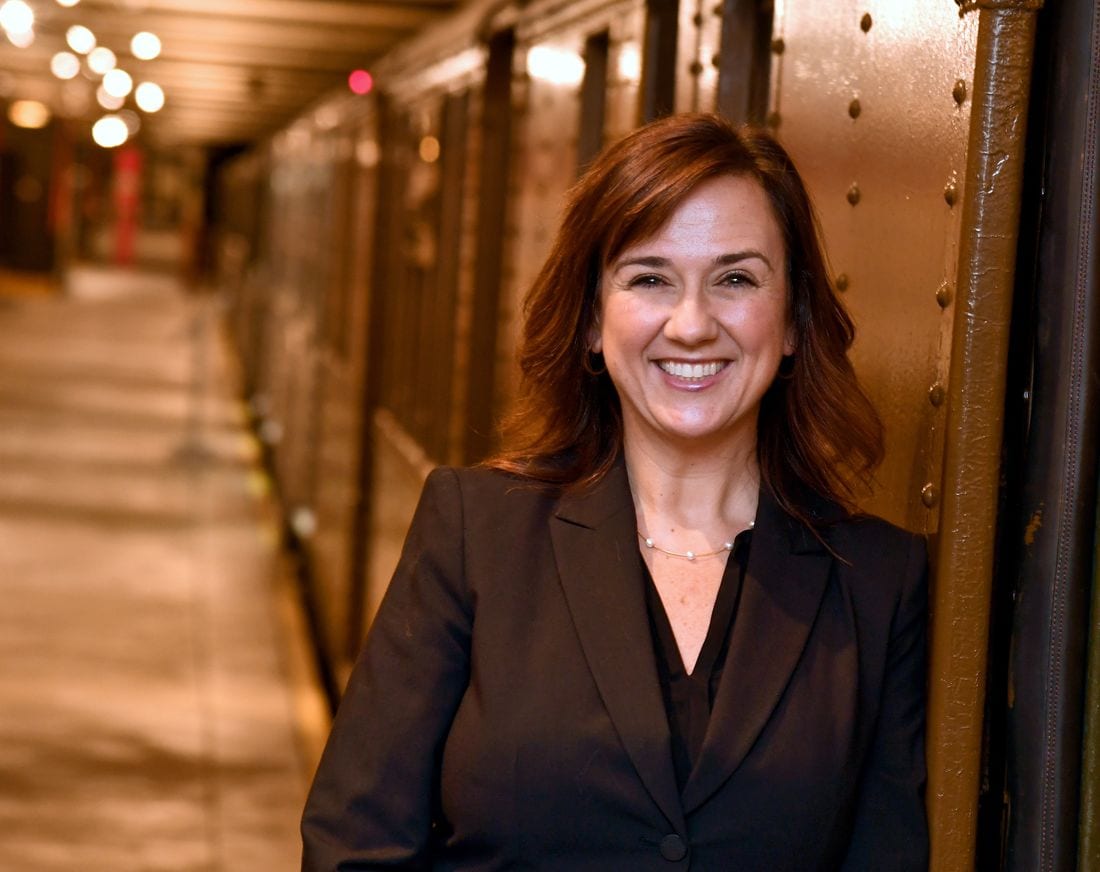
Bencivenga says: “We have designed a week-long intensive program that is, again, strength-based. We have developed a really cool curriculum of once-in-a-lifetime experience for transit enthusiasts. They can come and be part of this community of transit enthusiasts. We will put them in a social setting tailor-made to a) be about something that they love, and b) be a little bit subversively; force them to interact with people.
“Those are just some of the things that we do here. It’s a long list.”
More than just a museum about transportation
The museum did a ‘nostalgia ride’ in the first week of July. For example, taking part of its fleet, a train over a hundred years old, to Coney Island for the day. “It was a beautiful summer day. We put the train on the rails, drove it down to the beach, had a great day at Coney Island, and came back.”
Current and upcoming programs include further Nostalgia Tours, Transit Tots, the Transit Gaming Workshop for ages 5+, the NYTM Train Operators Workshop; where museum visitors can drop by the Computer Lab to take virtual control of a NY subway car, Museum Highlights, Camp Wanna-Catcha-Train; where adults, fortified by the beer included in the ticket price, can relive their adolescence underground in an adults-only evening of hands on crafts, scavenger hunts, and micro-tours of the collection.

Chugging towards the future
Bencivenga has plans for the future and initiatives she would like to introduce, but adds a caveat:
“I was cautious, when I came to the museum, that I think it is a fool’s errand and pretty disrespectful to come into a place and say, oh, it’s all broken. First of all, the fact of the matter is, that’s not true. And there are people here who have invested literally years of their life and a lot of love and probably a tear or two in making this place as incredible as it is.
And it is also true that for a very limited window of time I had new-girl glasses. I said to my team, I’m just going to be looking at things with fresh eyes. And while I will not opine on things I don’t know anything about, I also am going to ask a ton of questions, because it would be a missed opportunity to do anything but that.
And so together we looked at everything; thinking is this due for a refresh? Or, why is that like that? [Innovations] are not really my idea; I am just using fresh eyes, and every single thing I have thought that we should do, somebody else has quietly been thinking. I would really like to do that. So it’s a matter of looking at something and creating a space to ask the question. Then allowing your colleagues to say, oh my gosh, I’ve wanted to do that, to change this exhibit, for 10 years.
“And then you say, okay, let’s change it.”
A journey of continuous learning and progress
Using new technologies to interpret and engage is an area where there is room for growth.
She says: “We have some constraints that we have to try to figure out how to work around. Not least of which is that we have two physical gallery spaces; the main museum in downtown Brooklyn is a decommissioned 1936 subway station, which means limited temperature control. There are humidity issues, and so right now the main museum is not optimally positioned for heavy technology.
The gallery at Grand Central is free and open to the public whenever Grand Central is open. We tend to do things there, because it is above ground, and temperature and climate controlled. So it has a little more of an art gallery feel to it.”
She says: “There are things that we are doing to augment our electronic experiences. In terms of community outreach, we are working on a tactile book project which has an electronic pen and a Braille companion where you can touch the pen to different exhibits through the museum, and listen for an explanation of what is in front of you. That is going to be launched by the end of this year.”

In conclusion, she says: “I think I would just reiterate how I truly am lucky to work in the museum field, and how lucky I feel to be at this museum in particular.
Everyone come visit. You won’t be disappointed.”
All images courtesy of New York Transit Museum
